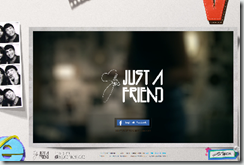Some more HTML5 goodness: Atari Arcade
It’s always fun when you get classic memories from your youth reinvented with the latest technology. In the 70’s of the last century Atari became the definitive gaming platform of it’s era.
Microsoft together with Atari and Grant Skinner, launched Atari Arcade, meant to showcase all the features and possibilities of HTML5, as well as an effort to develop gaming users interfaces" perfect for touch.
Even if you don’t care much for Web technology trends, you can always drop by the Arcade to visit some old friends. Maybe you’ll even find the game you spent most quarters on.
Application Data Access – closing the circle
Applications and data access development have come a long way and curiously now is the circle closes.In the early years an application’s code was merely a reflection of the data it was meant to store and retrieve. For instance, a COBOL commarea from a program meant to access data on IBM IMS database had the structure that mapped to the data, on it’s various possibilities. Alongside with the CRUD methods implementation.
If you wanted to search through the data, you had to develop the code for it. That was achievable to the developers but consequently no Ad-hoc queries were possible for the end-users. Business intelligence was nothing but some pen and pencil with big paper stacks.
Then came relational databases. The Relational model, first proposed in 1970 by Edgar F. Codd, departed from this tradition by insisting that applications should search for data by content, rather than by following links. This was considered necessary to allow the content of the database to evolve without constant rewriting of applications.

Relational systems placed heavy demands on processing resources, and it was not until the mid 1980s that computing hardware became powerful enough to allow them to be widely deployed. By the early 1990s, however, relational systems were dominant for all large-scale data processing applications, and they remain dominant today.
The dominant database language is the standard SQL for the Relational model, which has influenced database languages also for other data models.
Finally to make my point about what this post is about, comes the trend of handling large data stores with NoSQL. It does not use SQL as its query language. NoSQL database systems rose alongside major Internet companies, such as Google, Amazon, and Facebook, which had significantly different challenges in dealing with huge quantities of data that the traditional RDBMS solutions could not cope with.

NoSQL database systems are developed to manage large volumes of data that do not necessarily follow a fixed schema. Data is partitioned among different machines (for performance reasons and size limitations) so JOIN operations are not usable and it differs from the early days IMS hierarchical database because ACID guarantees are not given.
Nevertheless, we’ve gone back to key/object systems with little flexibility, highly optimized for retrieve and append operations and often offer little functionality beyond record storage.
I state again that data development has gone full circle.
Ubuntu One is the only sync service facing up to Dropbox
 There are numerous cloud services offering file synchronization between gadgets and personal computers, but Ubuntu One is the only service that comes on a near second place regarding multiplatform requirements.
There are numerous cloud services offering file synchronization between gadgets and personal computers, but Ubuntu One is the only service that comes on a near second place regarding multiplatform requirements.Dropbox works on Windows, Mac and Linux, as well as Android and iOS. Well Ubuntu One also works on Windows and Linux, it just misses OSX. the mobile version is also available for Android and iOS so it’s a tie regarding the mobile.
However, Ubuntu One has integrated services like a music library and contact backup which add value to the overall solution.
Feel free to check Ubuntu One out.
Outlook Hotmail connector stopped working with switch to outlook.com
I switched my Hotmail account to outlook.com and the desktop Outlook stopped being able to fetch my messages, contacts and calendar stuff.When you switch from a Hotmail or Windows Live address to a new outlook.com address your previous address becomes an alias.
Here's what you have to do on this forum thread: I switched from Hotmail to Outlook.com, why doesn’t Outlook Hotmail Connector work?
Visual Studio 2012 and .NET 4.5 have arrived
 It's exciting news for Microsoft technology developers, as the final builds of the newest version of the .NET framework as well as one of the best development tools, Visual Studio, have become available.
You can get a full briefing from this post here.
It's exciting news for Microsoft technology developers, as the final builds of the newest version of the .NET framework as well as one of the best development tools, Visual Studio, have become available.
You can get a full briefing from this post here.Furthermore, Microsoft has kindly made available a free ebook from Apress media on Visual Studio technologies. It has the following table of contents:
- Chapter 1: Introducing Visual Studio
- Chapter 2: Getting Started with Metro
- Chapter 3: Testing in Visual Studio
- Chapter 4: Introduction to ALM
- Chapter 5: ALM Assessments
- Chapter 6: ALM Using TFS
- Chapter 7: Windows Azure Platform Overview
- Chapter 8: Windows Azure Compute
You can download it here.
Oracle Announces Plan to Support Microsoft Visual Studio 2012
Oracle plans to offer a new version of the Oracle Developer Tools for Visual Studio that is compatible with Visual Studio 2012. Oracle plans to make this new version available within 40 days of Microsoft’s Release to Manufacturing (RTM) of Visual Studio 2012. As with earlier releases of Visual Studio, Oracle has partnered closely with Microsoft as part of the Visual Studio Industry Partner Program to make this release possible. (source)HTML5 Coolness: next generation music video
Television channels like MTV and VH1 are still a must have for all the music lovers out there. However, things are evolving and the Internet is the new mainstream media for checking out new songs by your favorite band or getting to know new artists.But the Web offers something that TV channels don’t: freedom for music performers to publish themselves and freedom for you to choose who to listen or watch.
Of course, with the new paradigm, upcoming artists will have to strive and battle over public attention. Take their videos to their full potential and become interactive.
The performer Jasmine Villegas did just that with her music video “Just a Friend”.

Check it out because it’s a really cool experience built entirely on HTML5. Afterwards, watch how everything was developed on this behind the scenes interview with the people who built it:
To check out the technical details behind this whole experience, you can visit this page.
Subscribe to:
Posts
(
Atom
)




No comments :
Post a Comment